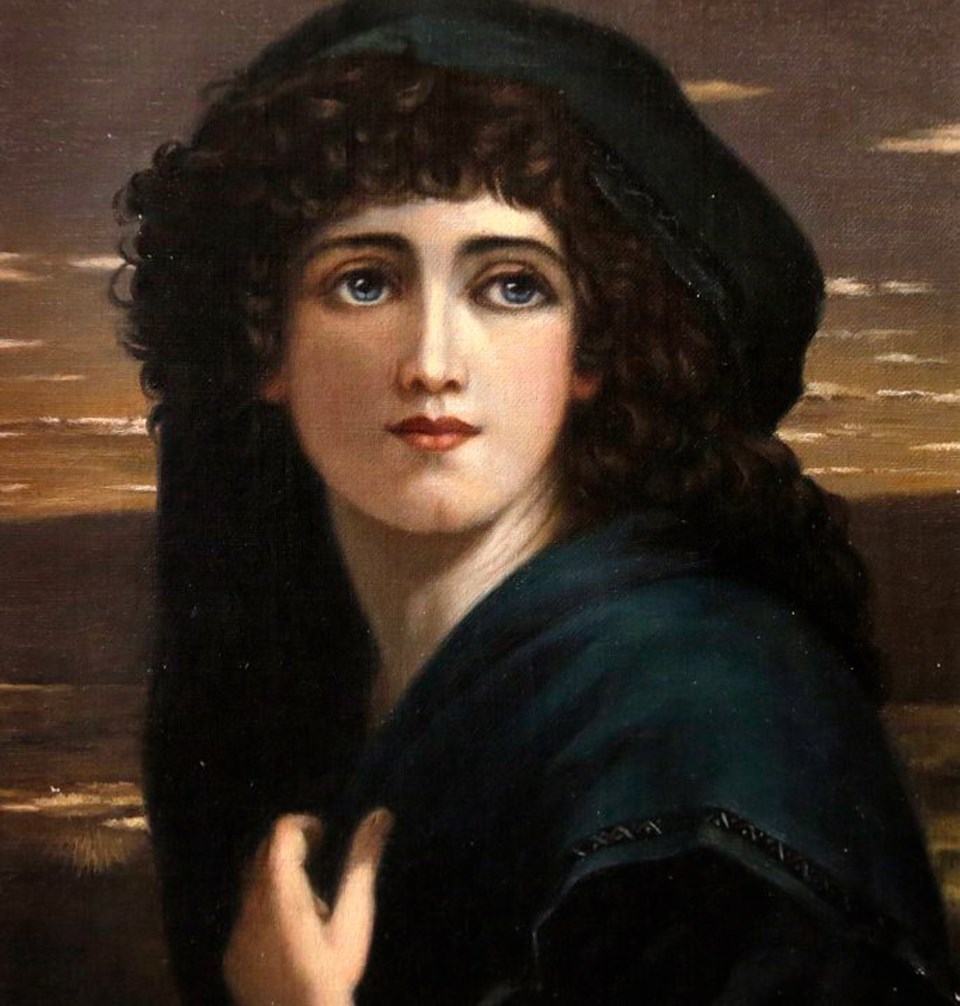One thing led to another. I went to see an installation of artworks by the Sisters of St. Ann at the Art Gallery of Greater Victoria. The sisters belong to a religious community based in Lachine, Que., and first came to Victoria in 1858 to teach aboriginal children. They arrived during the Fraser River Gold Rush to teach children of the settlers. By 1873, they were providing art classes — surely the first on this island — for their students and the wider community. By the time their school, St. Ann’s Academy on Humboldt Street, closed in 1973, the sisters had taught some 36,000 students.
After the academy closed, the sisters moved to Queenswood, where they lived until that property was sold to the University of Victoria. The academy became government offices, and an important portion, including the chapel, was preserved as a historic site managed by the Provincial Capital Commission. The archives of St. Ann’s were carefully preserved and are now housed at the Royal B.C. Museum with the Provincial Archives, under their own curator, Carey Pallister. Many other artworks created by and about St. Ann’s were placed in the Art Gallery of Greater Victoria.
The art on show at the gallery was made to serve many purposes. A naïve watercolour by Sister Mary Sophie in 1871 documents the original white clapboard schoolhouse. Paintings of a later period show the imposing new St. Ann’s seen across the waters of James Bay, for before the Empress Hotel was developed, the waters of the bay lapped the foot of Blanshard and Humboldt streets. Portraits in charcoal, done with great care in the French academic style of the era, represent the bishop and priests who directed Victoria’s Roman Catholic community.
These artworks speak of a time and context different from ours. An oil by Sister Mary Osithe shows nuns in long black habits standing on the wharf at sunset as a steamship takes the first missionaries of St. Ann’s to Japan. The story it tells, rather than the artistry, compels our attention. That said, Sister Osithe, of all the artists in this show, created work that rises above the context and stands as fine painting.
Sister Osithe came to Victoria to teach art at St. Ann’s early in 1895. Her skill with the brush was developed in her native Quebec under William Raphael and Edmund Dyonnet, both highly regarded and European-trained artists of the period. Large-scale portraits of her students, now beautifully restored by the Provincial Archives, show her talent. Landscapes of the period offer a fascinating view of Victoria. Her accomplished copies of devotional works by such masters as the Spaniard Esteban Murillo provided a focus for worship that was absolutely central to her practice. Sister Osithe was also an inspiring teacher, developing china-painting among the young women of Victoria, and was resident architect of the sisterhood, designing the Little Flower Academy in Vancouver.
An accompanying exhibit has just opened at St. Ann’s. There, I met Shelley Myhres, who curated the exhibit in the original building. Many paintings and craft works, ably interpreted, fill the “parlour” there. A cross among roses, intricately sculpted of white wax more than a century ago, has miraculously survived in its satin-lined casket. Created by Sister Mary Sophie, St. Ann’s first art teacher, it was sold to raise funds for the academy.
Beyond the parlour, the exhibit continues in the hall with work by contemporary sisters of St. Ann. Oils by the first archivist, Sister Margaret Cantwell, are joined by Chinese-style watercolors by Sister Marguerite Lalonde. Of particular note are the vivid and beautifully drawn florals by Sister Debra Freeman. After taking her vows, Sister Debra studied nursing at St. Joseph’s Hospital across the street, itself part of a long, caring tradition of the sisterhood. Somehow, she found time to meditate on and share the wonders of God’s creations by painting watercolours that reflect peace and joy. With Sister Debra’s work, this exhibit of 150 years of the Sisters of St. Ann ends on a high note.
Don’t miss the chance to look in on the splendidly restored chapel just steps away. Built in 1858 by Québécois priests in a style unique in Victoria, it is itself a glorious a work of art. Art can be an act of worship.
You are invited to St. Ann’s for an open house and garden tea party Aug. 25 at 2 p.m. RSVP to info@friendsofstannsacademy.com.
• Nurturing the Creative Spirit: The Sisters of St. Ann, Art Gallery of Greater Victoria, 1040 Moss St., 250-389-0303, aggv.bc.ca, until Dec. 8.
• Art and Soul: Art and Spirituality at St. Ann’s Academy, 835 Humboldt St., 250-953-8829, stannsacademy.com, until Dec. 31.
• Also note that the Fibrations Festival of fibre arts takes place on the grounds of St. Ann’s on Sunday.



